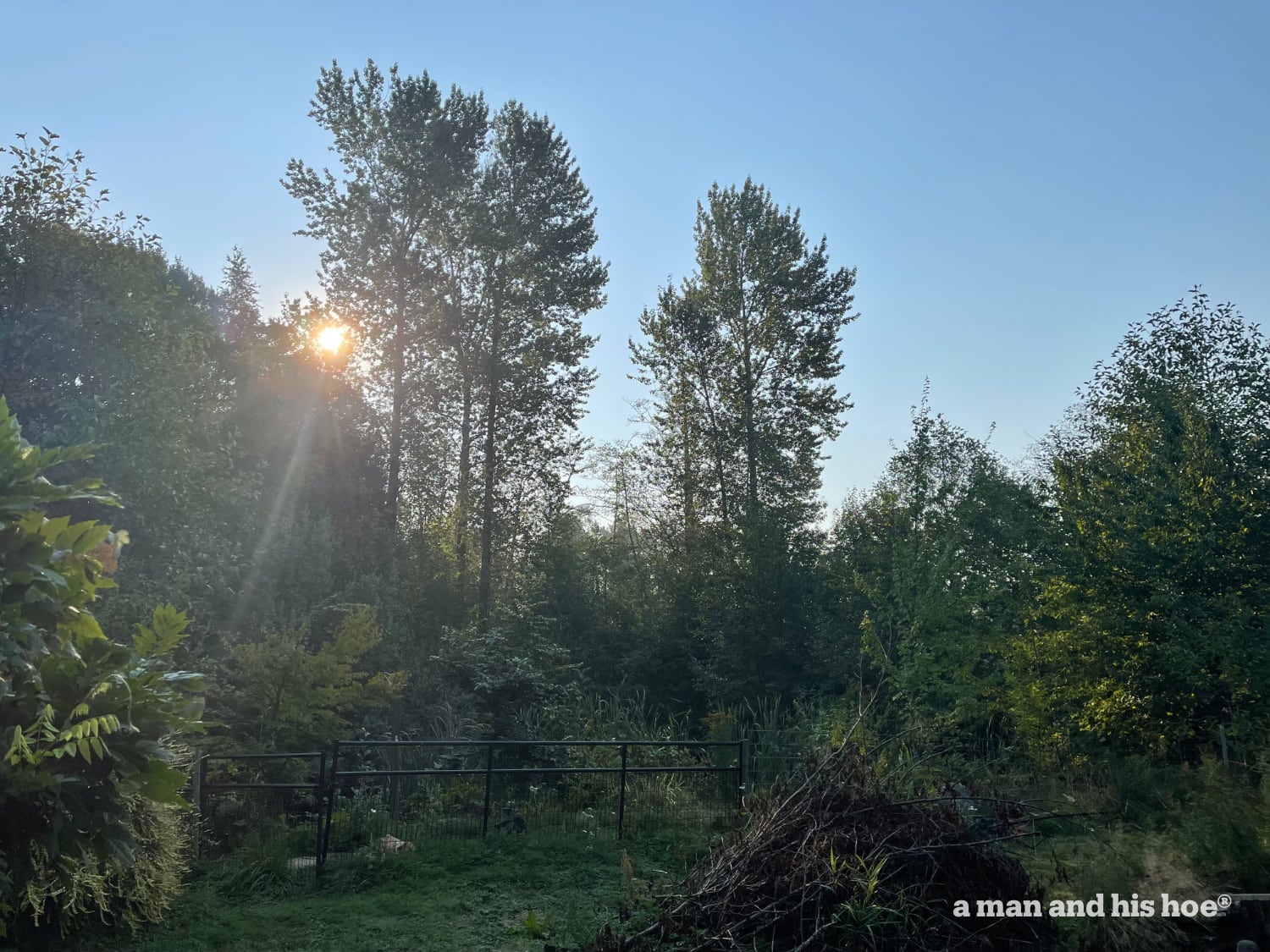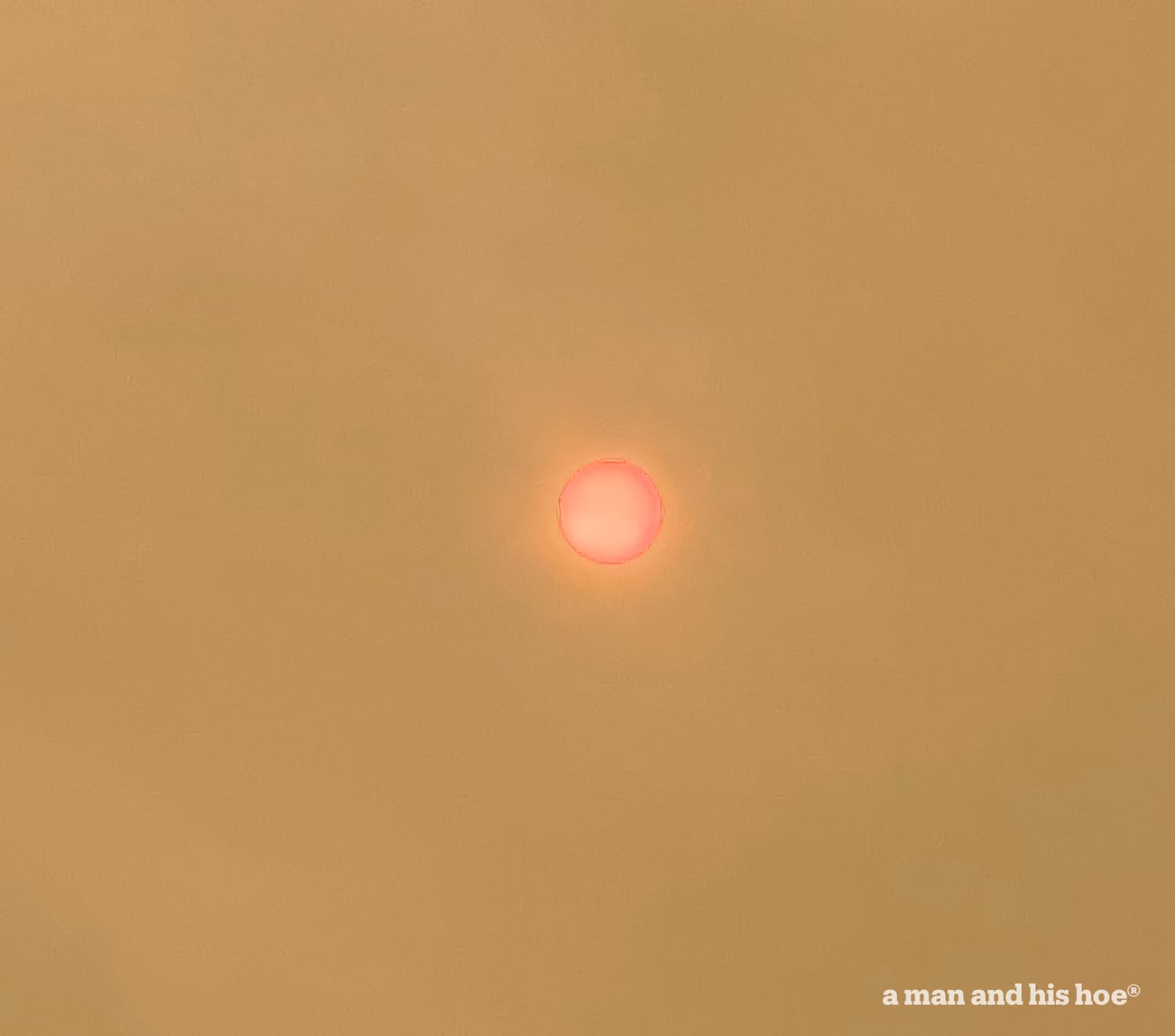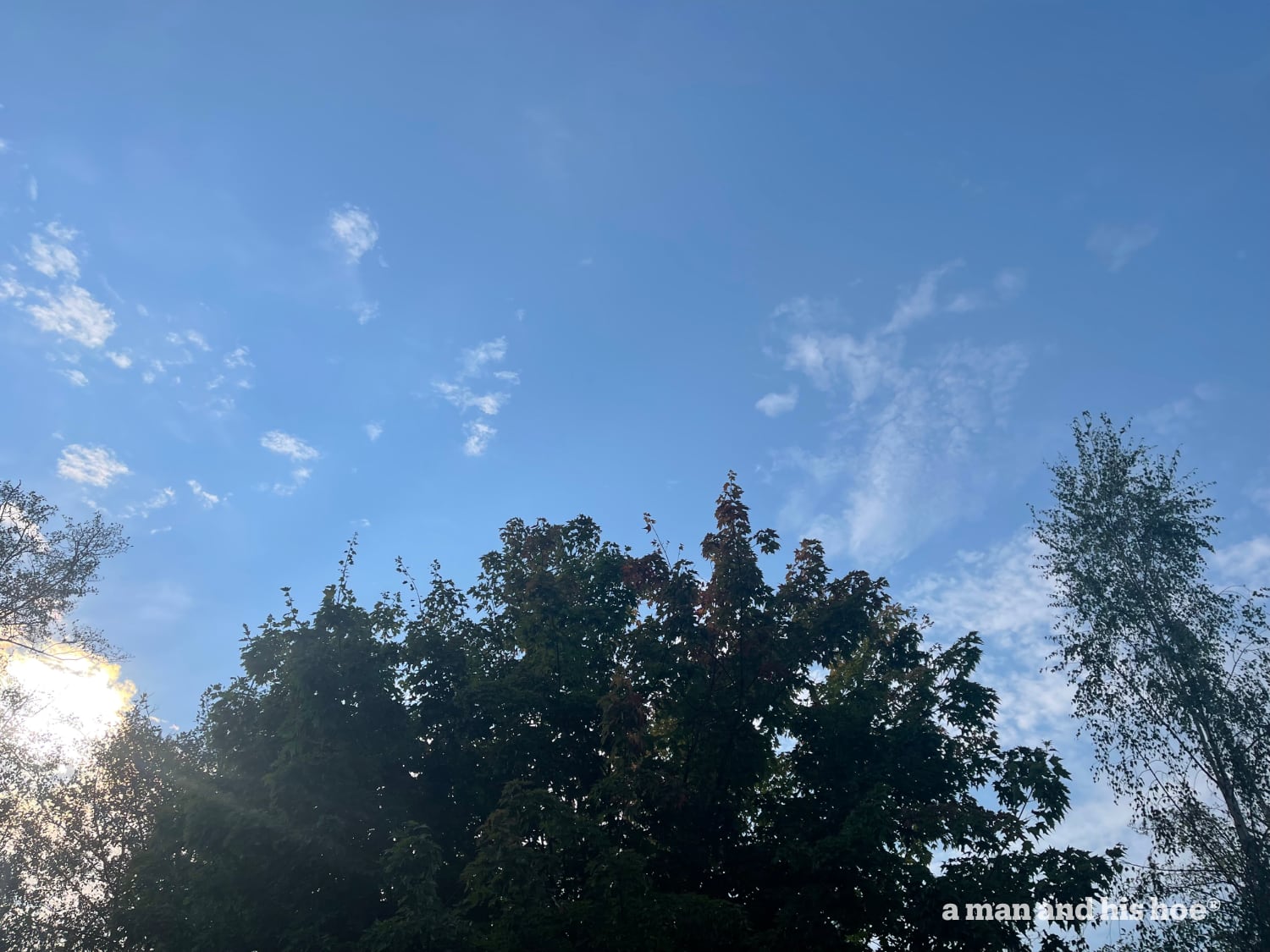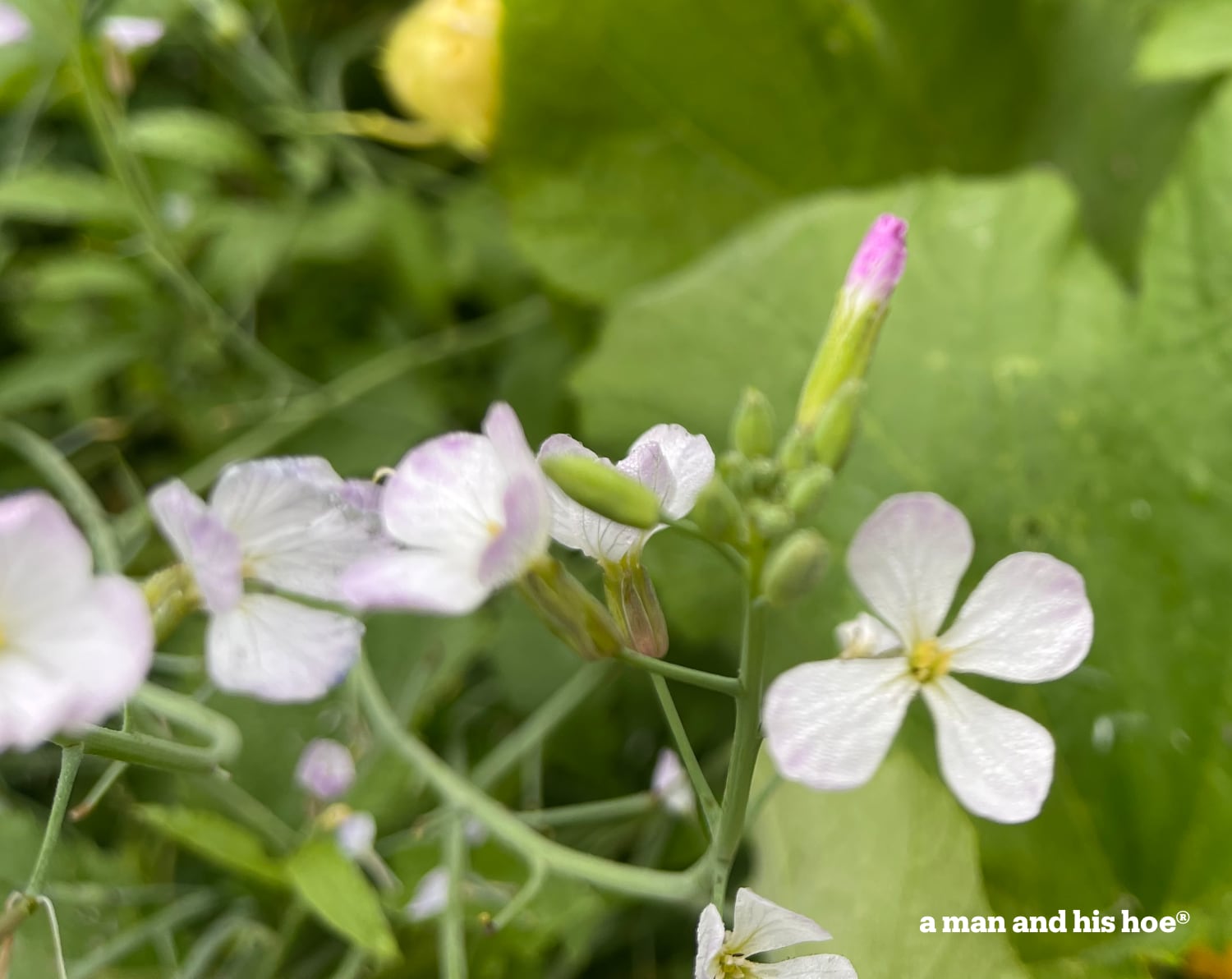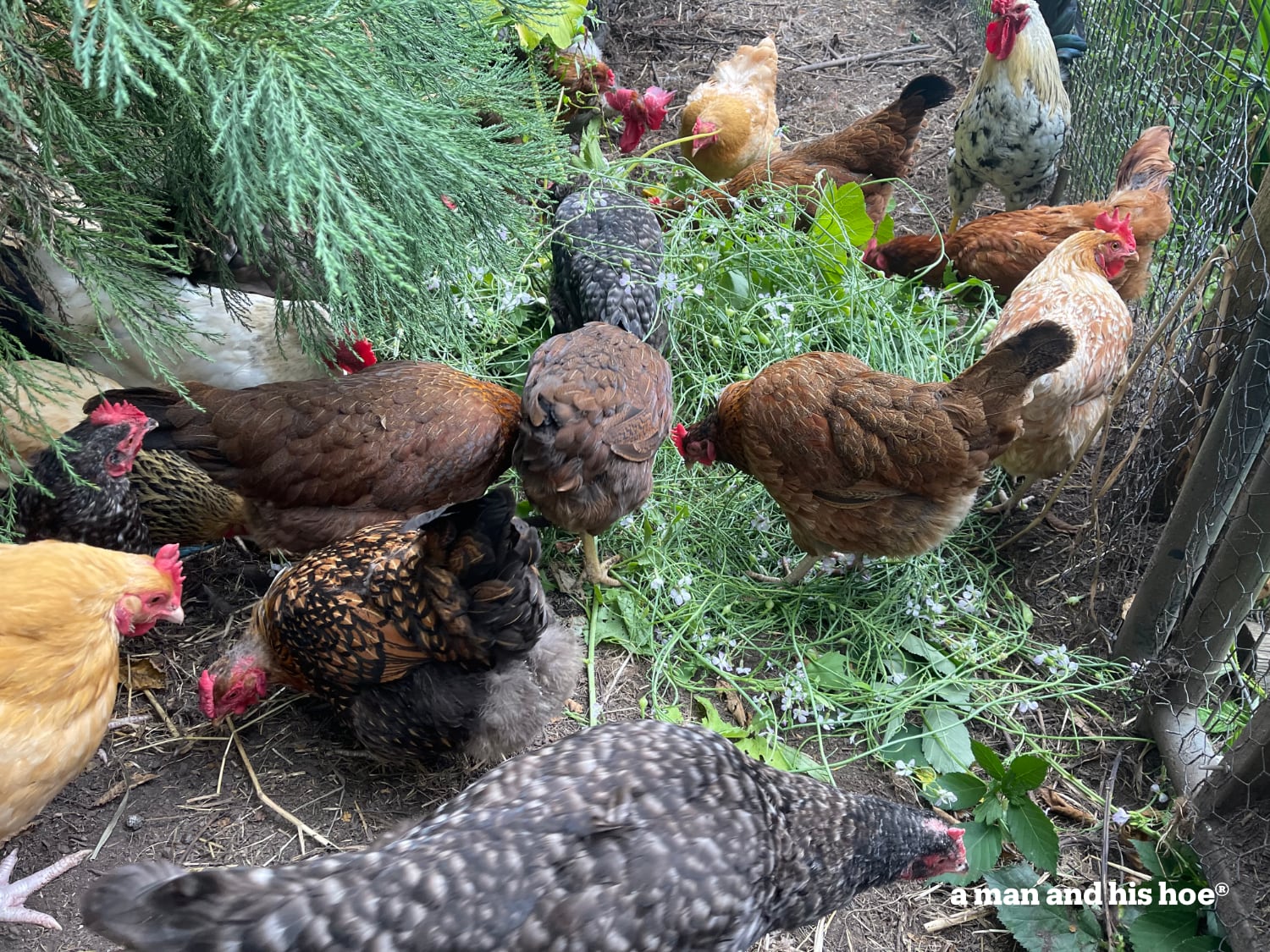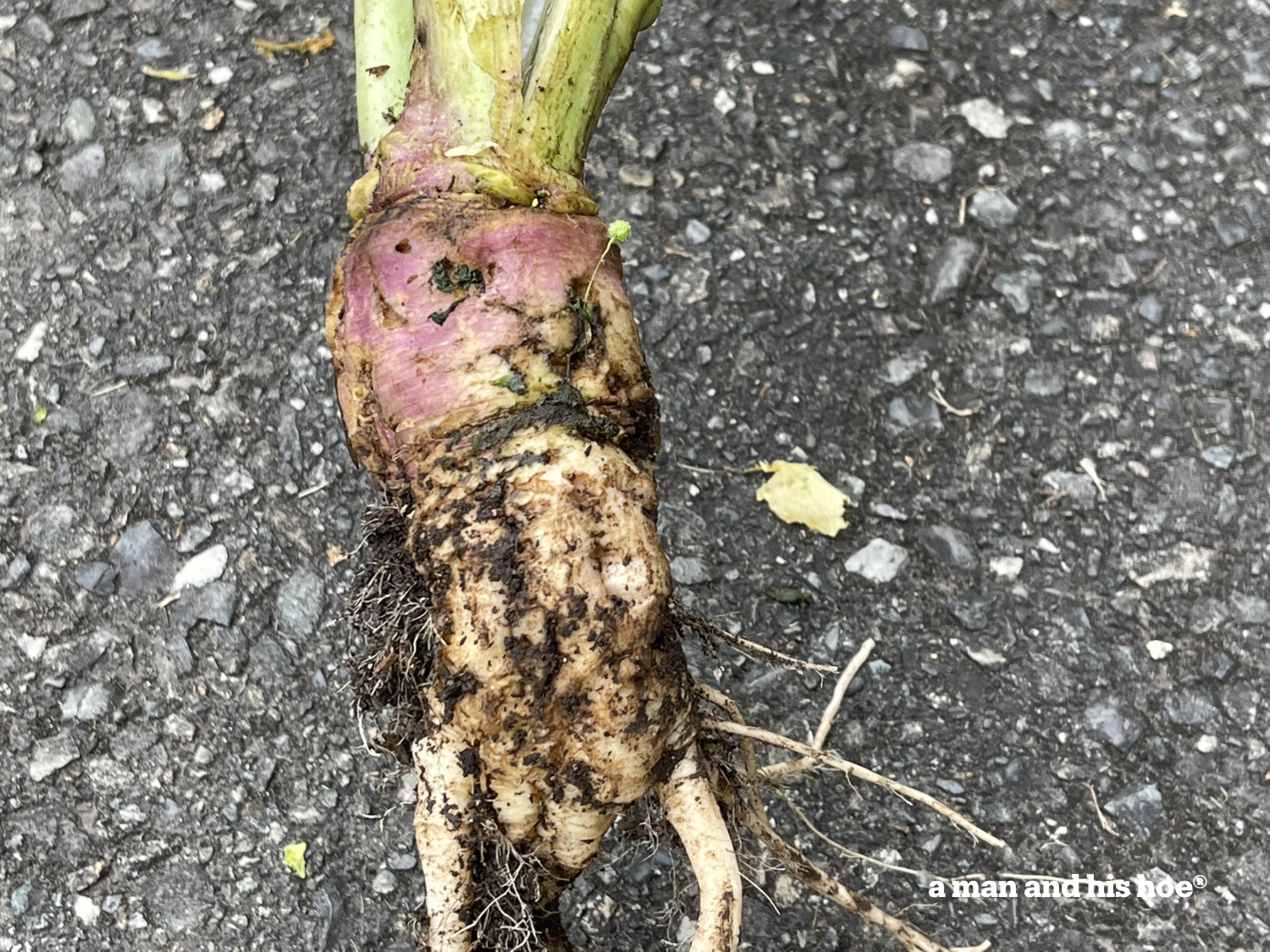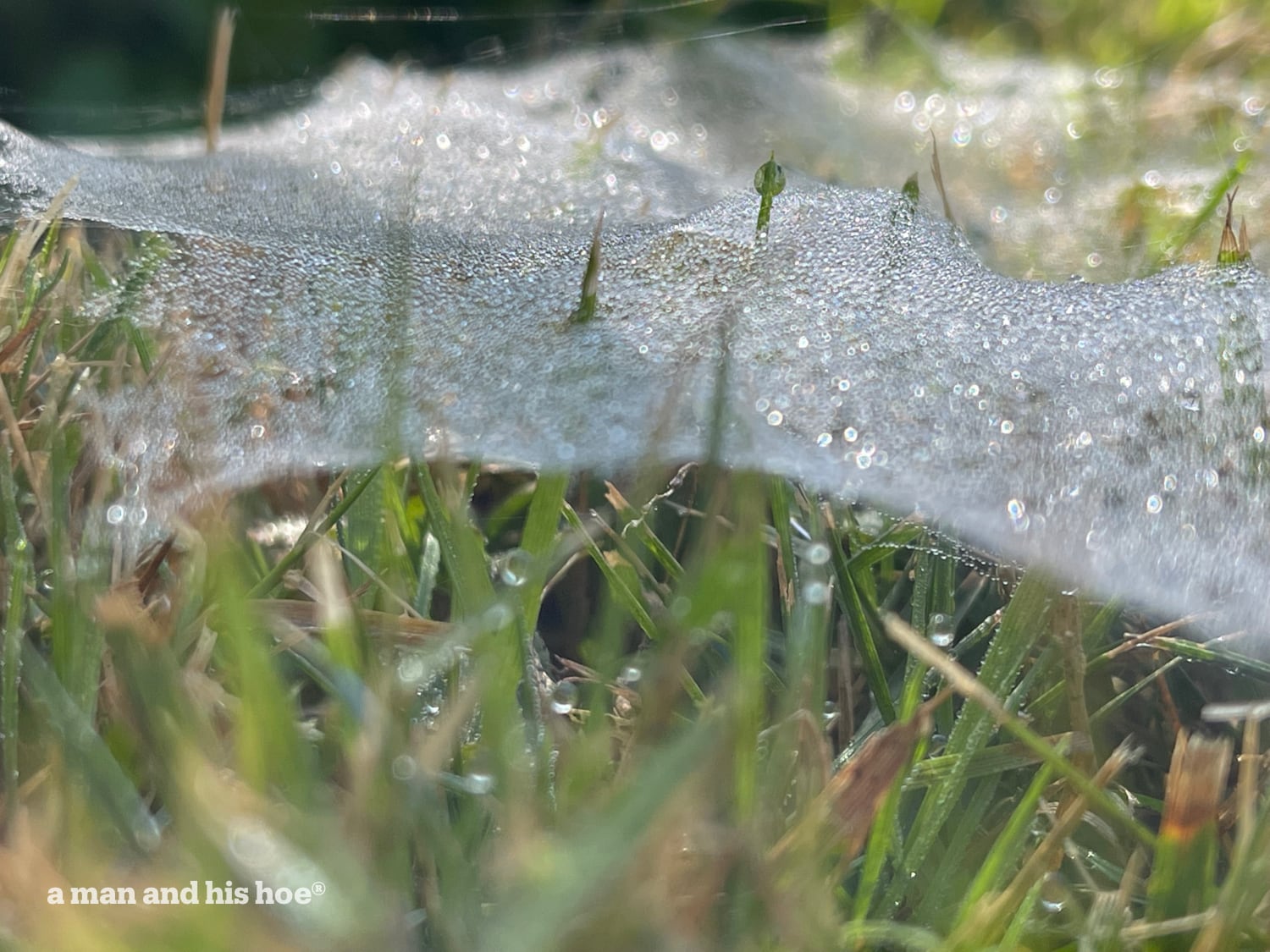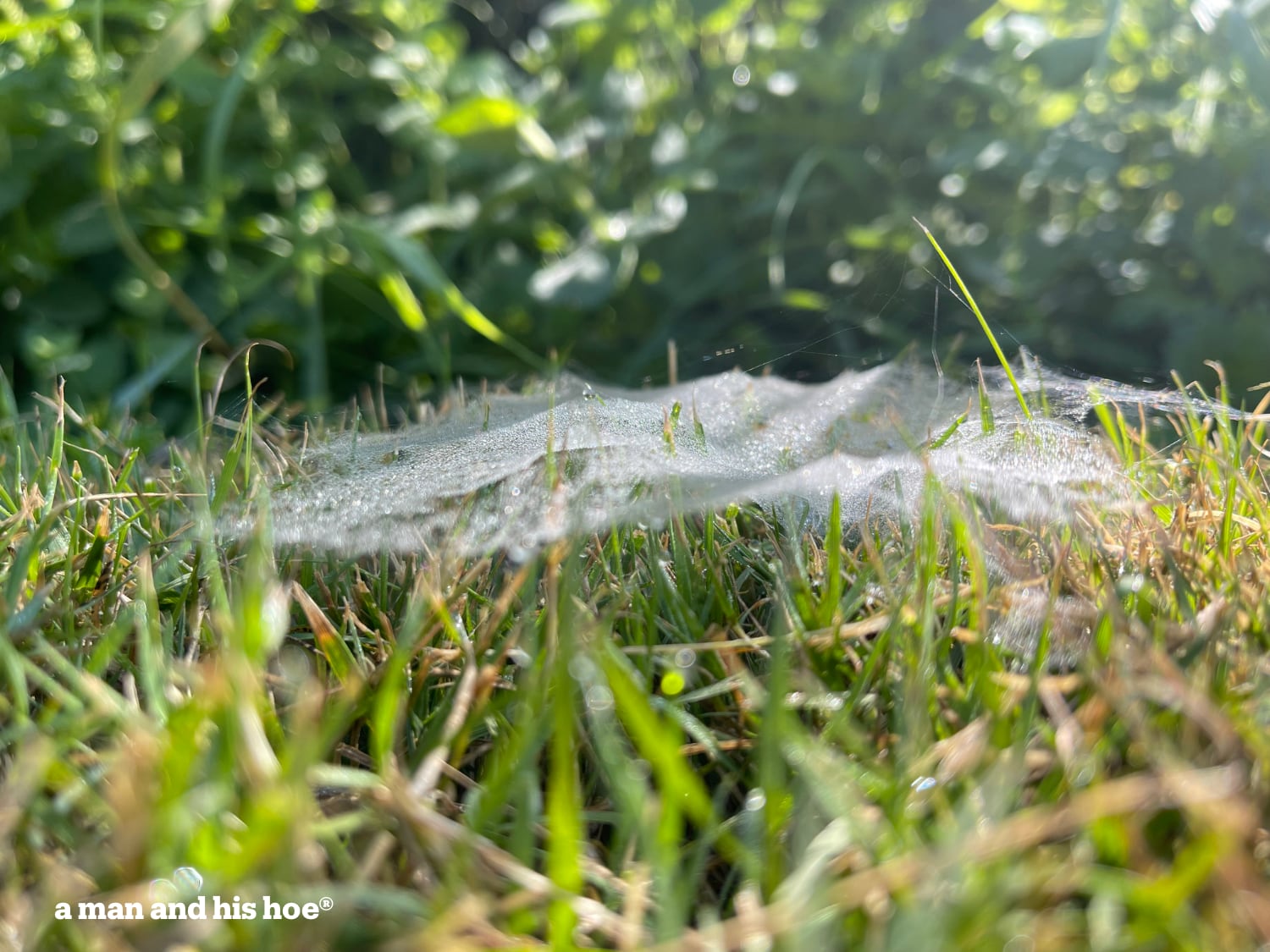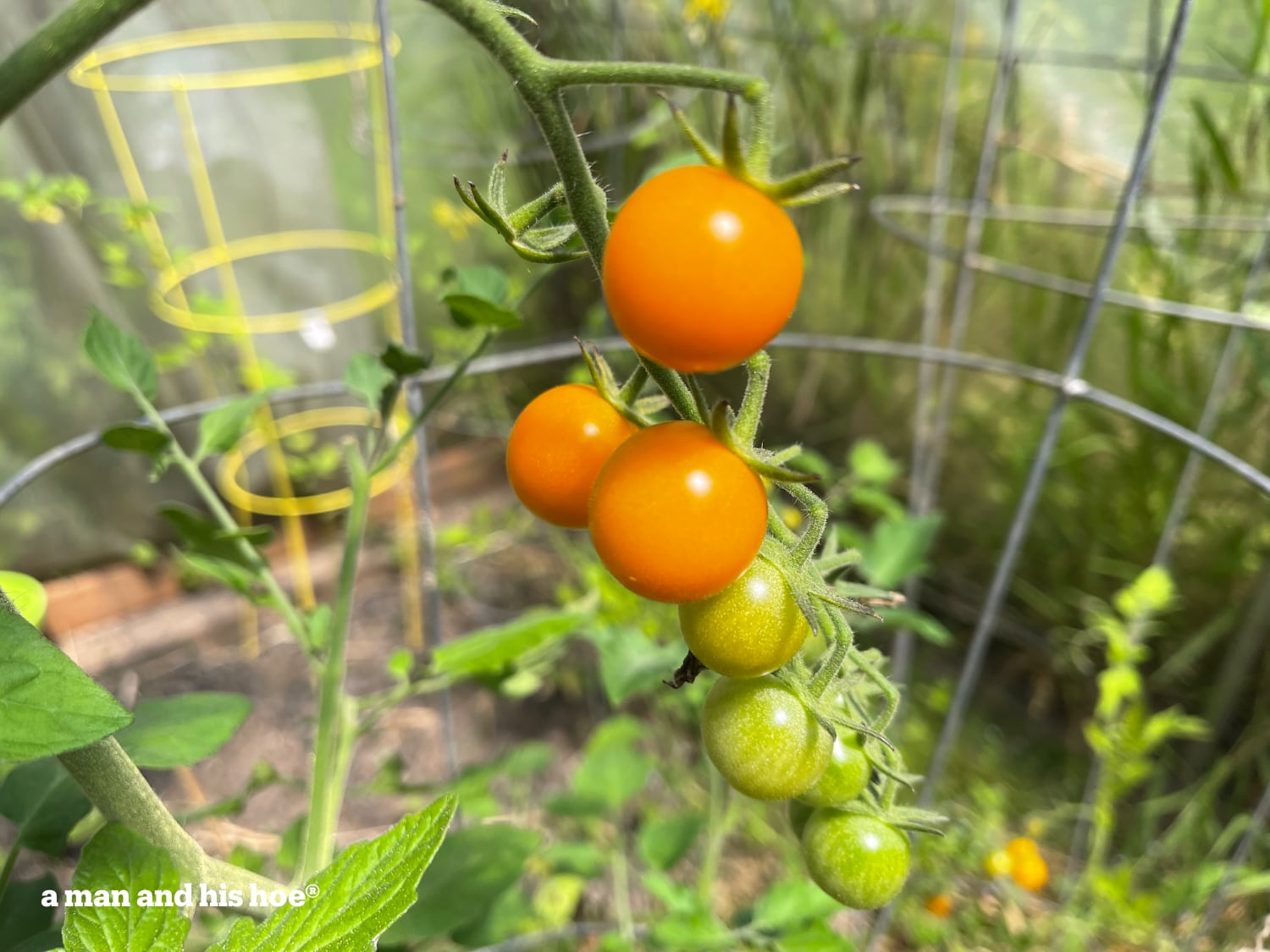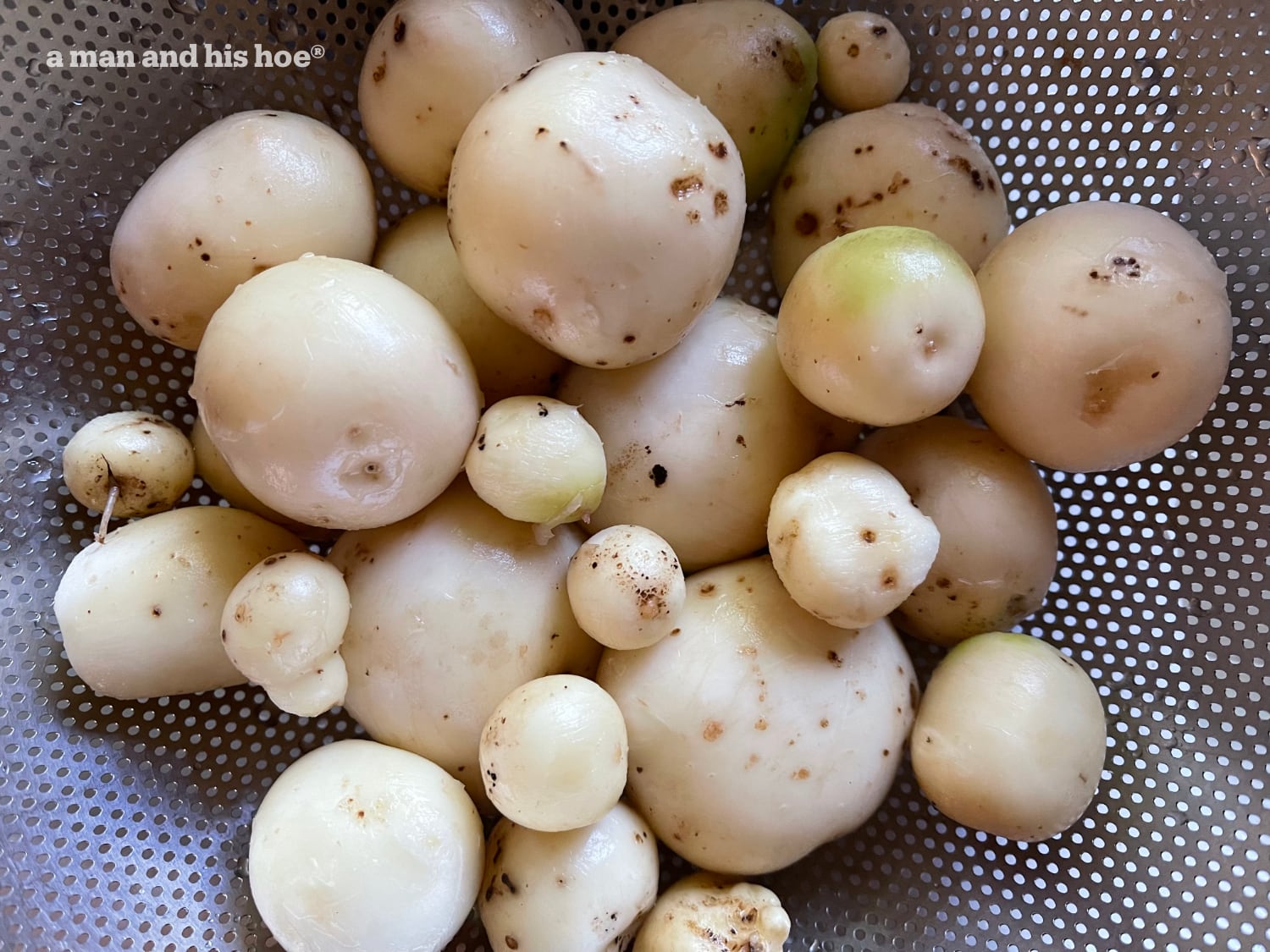
Potatoes out, garlic in. It’s that time of year. Potatoes come out of the soft, warm earth. No matter how many times I pull potatoes out of the earth, it’s a wonder seeing them appear. It’s amazing how potatoes suck in carbon out of the air, combine it with water and minerals out of the ground, and store the result in delectable nuggets full of vitamins and minerals.

And as I pull out the potatoes, I push the garlic in. This year I’m taking out the potatoes bit by bit. Instead of digging entire rows of potatoes out, I’m just pulling them out as we eat them, and planting a handful of garlic gloves. I should have most of the potatoes out by the end of November and the garlic cloves snug in their winter beds.
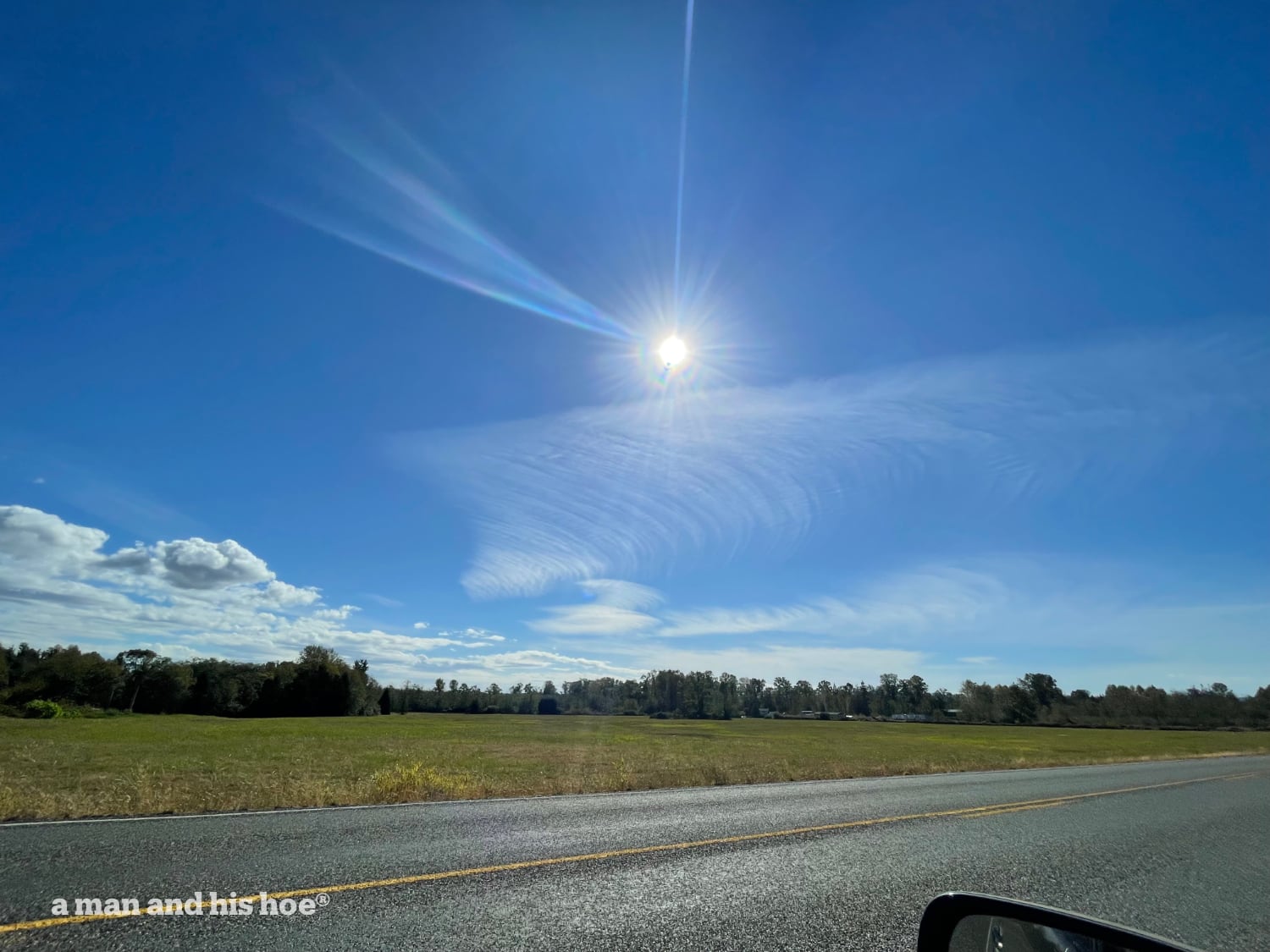
One recent afternoon a bright sun and unusual clouds made me stop on the way to the post office. It pays to look up. Clouds are always being quirky. So quirky at times it makes me wonder if they are watching to see if anyone notices what they are doing.
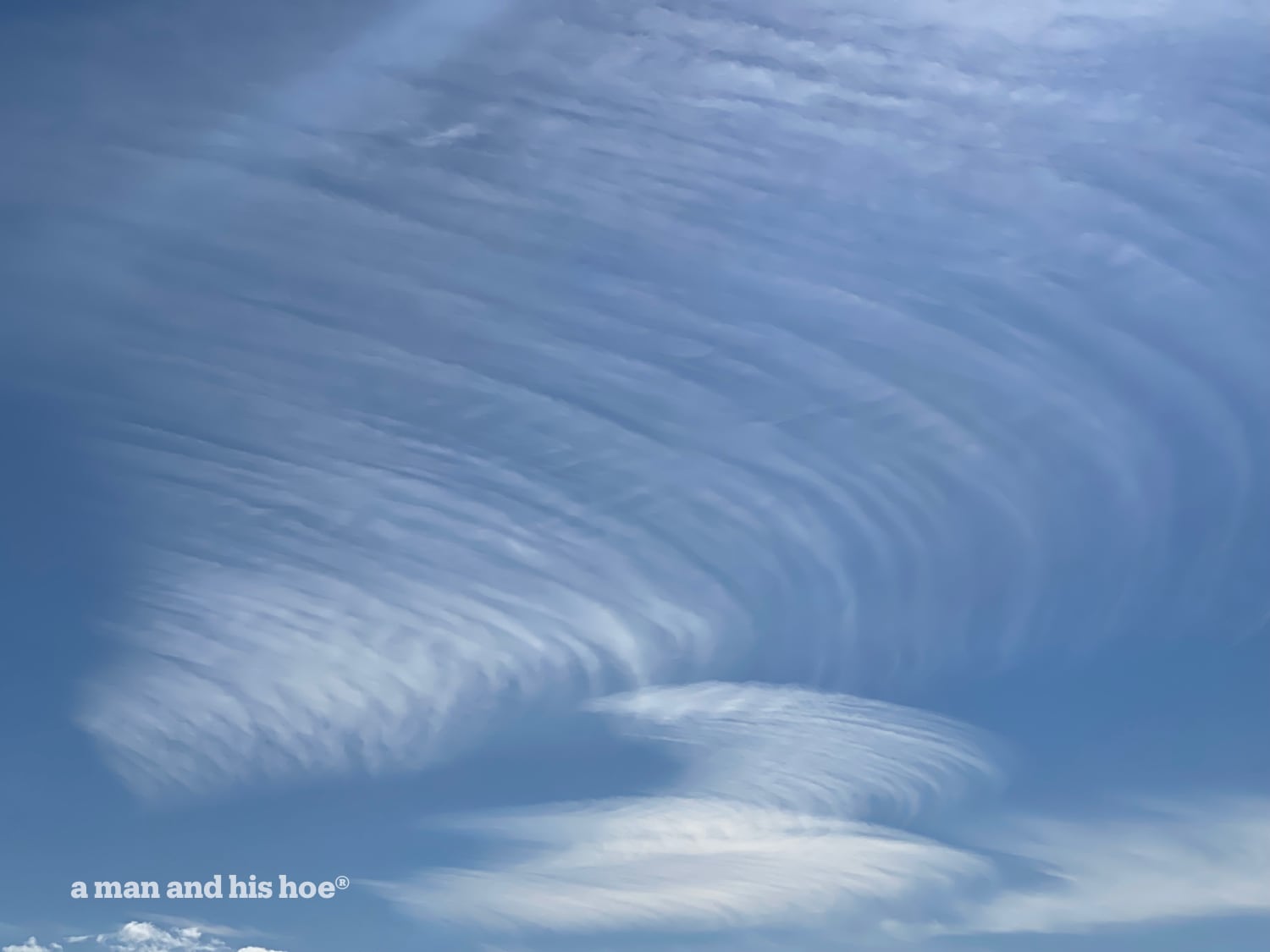
How often do you see clouds like this? It’s like someone went crazy with a paint brush up against the blue sky. Show something like this to a psychoanalyst and what would they make of it?

